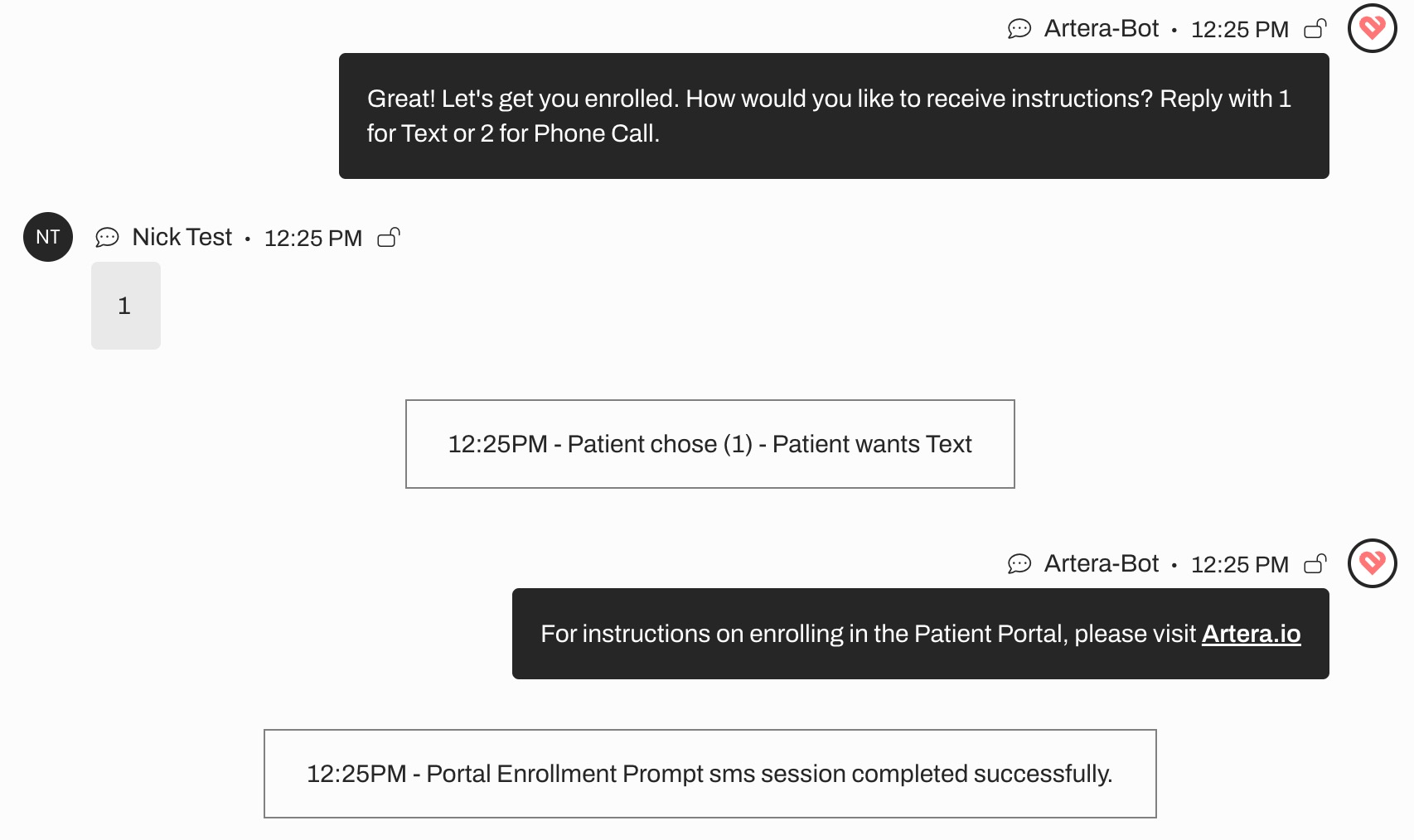Conversation Flows: Patient Channel View
- Get Started
- Release Notes
- Automations
- Patient Channel
- Troubleshooting and FAQ
- Patient Facesheet
- Technical Specifications
- Insights & Analytics
- Collaborative Inbox
- Conversation Flows
- Campaigns
- Lines & Resources Requests
- Lines, Events, Resources
- SMS Basics
- Triggers
- Referrals
- Add-Ons
- Users and Groups
- Platform Settings and Configuration
- Self-Rescheduling
- Recalls
- Marketplace
- Pulse Outreach
Table of Contents
Root Message and Event Initiation Message Patient Response and in Progress Event MessagesPatient Response and Completion Event Message Patient Channel FAQConversation Flows are used to engage the patient, ask questions, and deliver helpful, friendly responses without requiring any staff intervention. Let’s review how Conversation Flows will appear in the Patient Channel.
Root Message and Event Initiation Message
When a patient receives the initial message in a Conversation Flow (known as the Root Message), an Event Message is added to the Patient's Channel.

Patient Response and In Progress Event Message
As the patient engages with the Conversation Flow, you will be able to view their response(s) and the associated Event Messages.
Patient Response and Completion Event Message
Once the patient has completed the Conversation Flow sequence, the session will automatically complete.

Patient Channel FAQ
Will all Conversation Flow messages always display in a Patient's Channel?
Yes, unless the Hide Messages in Inbox setting is enabled for the Conversation Flow delivered to the patient. Click here to learn more.
How do I distinguish between a Conversation Flow Message and an Artera reminder?
Similar to other Artera reminders, messages that are sent through one of our automated options are displayed under the familiar Artera-Bot user on the right side of the Patient Channel. The easiest way to distinguish between a Conversation Flow message and an Artera reminder is to look for the white Event Message boxes that appear in the Patient's Channel. Those Event Messages display as a patient progresses through a Conversation Flow's sequence. 
How do I know when a patient responds to a Conversation Flow's message?
Patient responses to Conversation Flow messages appear just like a normal patient response. The only notable difference is the Event Message that populates based on the patient's response. Remember: Event Messages are not visible to the patient and are designed to provide context to staff users.

How does a Conversation Flow end?
There are two ways for a Conversation Flow to end: Completion and Expiration.
-
The Conversation Flow session is completed successfully, meaning the patient reached the end of the Conversation Flow.

-
The Conversation Flow session expired. Each of the three expiration reasons populates with a unique Event Message:
-
Expired due to an Incoming Message: The patient texts a response that is outside of the prescribed options. This automatically ends the Conversation Flow and opens the Patient Channel for staff review.

-
Expired due to an Outgoing Message: A message is sent to the patient from Artera that is not a part of the Conversation Flow (Manual Message, Trigger, Broadcast, Campaign).

-
Expired due to session timeout: The patient did not respond within the timeframe set on the Conversation Flows Configuration page.

-
Expired due to an Incoming Message: The patient texts a response that is outside of the prescribed options. This automatically ends the Conversation Flow and opens the Patient Channel for staff review.
Should Artera users interact with Conversation Flows?
We recommend not interrupting the Conversation Flow unless the message to the patient is critical or urgent. Sending a separate message to the patient will automatically end the Conversation Flow's session. So, review the Event Messages that show the Conversation Flow was initiated, completed, or expired before sending a manual message to a patient.
NOTE: Adding an Internal Mention to a Patient's Channel will not interrupt a running Conversation Flow.
Please contact your management team for guidance on when it is appropriate to interrupt a Conversation Flow.